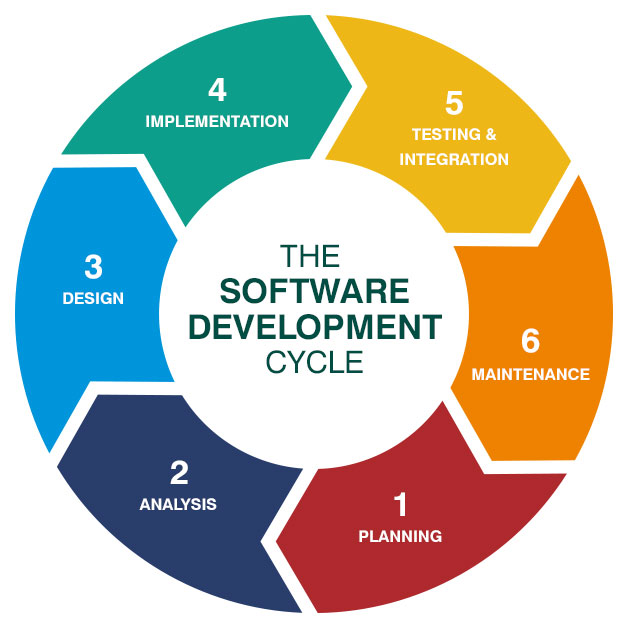
1. Requirements Gathering: In this initial stage, the development team collaborates with stakeholders, clients, and end-users to gather and document the software requirements. The focus is on understanding the purpose of the software and the needs it should address.
2. Analysis and Planning: The gathered requirements are analyzed to create a detailed project plan. This plan includes defining project scope, setting timelines, allocating resources, and estimating costs.
3. Design: During the design phase, the development team creates a high-level architecture and a detailed design for the software. This includes defining the system's structure, data flow, user interface, and the overall approach to implementing the requirements.
4. Implementation: The design is transformed into actual code during the implementation phase. Programmers write the code using selected programming languages, frameworks, and tools.
5. Testing: Once the software is implemented, it undergoes various testing processes to identify and fix bugs, validate its functionality, and ensure that it meets the specified requirements.
6. Deployment: After successful testing, the software is deployed to the target environment, making it available for users to access and interact with.
7. Maintenance and Support: After deployment, the software requires ongoing maintenance and support to address issues, make updates, and ensure its continued performance.
It's important to note that the SDLC can vary based on the development methodology used. For example, Agile methodologies may follow iterative cycles where these stages are repeated in shorter iterations. The SDLC helps ensure that software development projects are well-organized, efficient, and produce high-quality software that meets the needs of stakeholders and end-users. It provides a structured approach to managing software development projects from concept to completion.